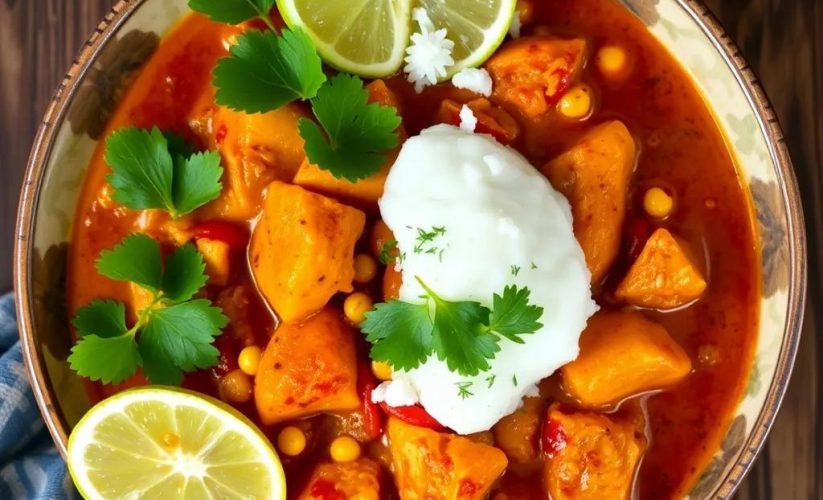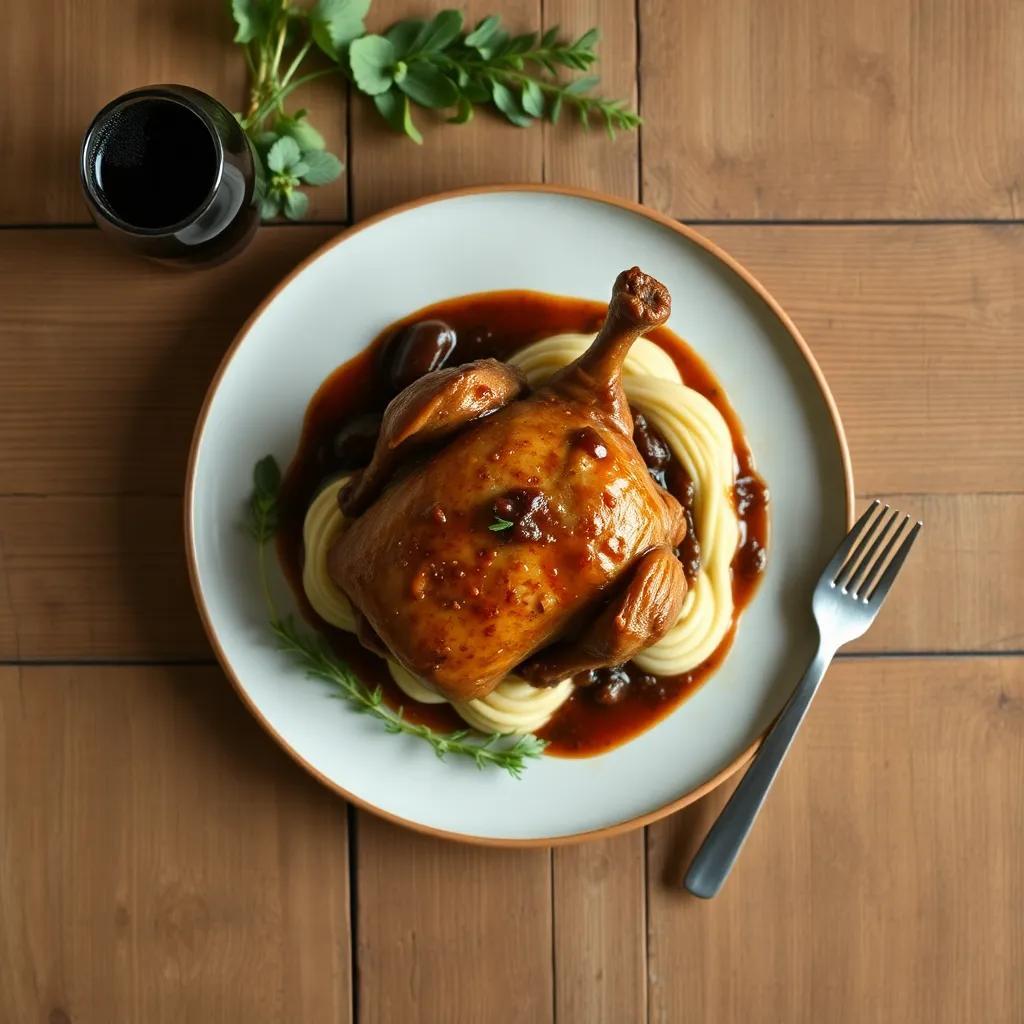Discover the Ultimate Easy Vegan Ratatouille Recipe: Flavorful & Healthy
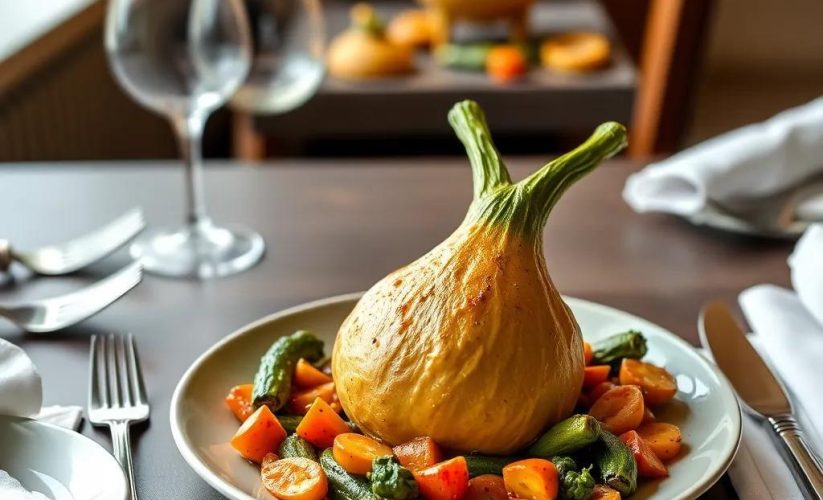
Discover the Ultimate Easy Vegan Ratatouille Recipe: Flavorful & Healthy
🌍 Cuisine: French
⚙️ Difficulty: Easy
Ingredients
Nutrition Facts
180
Instructions
- Prepare all vegetables: dice the eggplant and tomatoes, slice the zucchinis, chop the bell peppers and onion, and mince the garlic.
- Sprinkle the diced eggplant with a little salt and let it sit in a colander for 15 minutes to remove bitterness and excess moisture, then pat dry with a paper towel.
- Heat 2 tablespoons of olive oil in a large skillet over medium heat. Add the onion and cook until translucent, about 4–5 minutes.
- Add the minced garlic and cook for another minute until fragrant.
- Stir in the diced eggplant and cook until it begins to soften, about 7 minutes, stirring occasionally.
- Add the chopped bell peppers and sliced zucchinis to the skillet. Cook for another 8–10 minutes until all vegetables are tender.
- Stir in the diced tomatoes, tomato paste, dried thyme, dried oregano, and bay leaf. Mix well and season with salt and black pepper to taste.
- Reduce heat to low, cover, and simmer for 15–20 minutes, stirring occasionally, allowing the flavors to meld together.
- Remove the bay leaf and adjust seasoning if needed.
- Drizzle the remaining 1 tablespoon of olive oil over the ratatouille before serving.
- Garnish with fresh basil and optional parsley leaves.
- Serve hot or at room temperature, alone or with crusty bread, rice, or pasta.
Serving Suggestions
- Serve ratatouille over cooked quinoa or brown rice for a wholesome meal.
- Pair with crusty artisan bread and a drizzle of balsamic glaze for a light lunch.
- Use as a filling for vegan wraps or pita sandwiches with fresh greens and hummus.
- Top with vegan parmesan or nutritional yeast for an extra burst of flavor.
- Serve alongside roasted potatoes or polenta for a hearty dinner.
- Add a side of mixed green salad for a complete nutrient-rich meal.
- Chill and serve as a refreshing summer salad with a splash of lemon juice.
Table of Contents
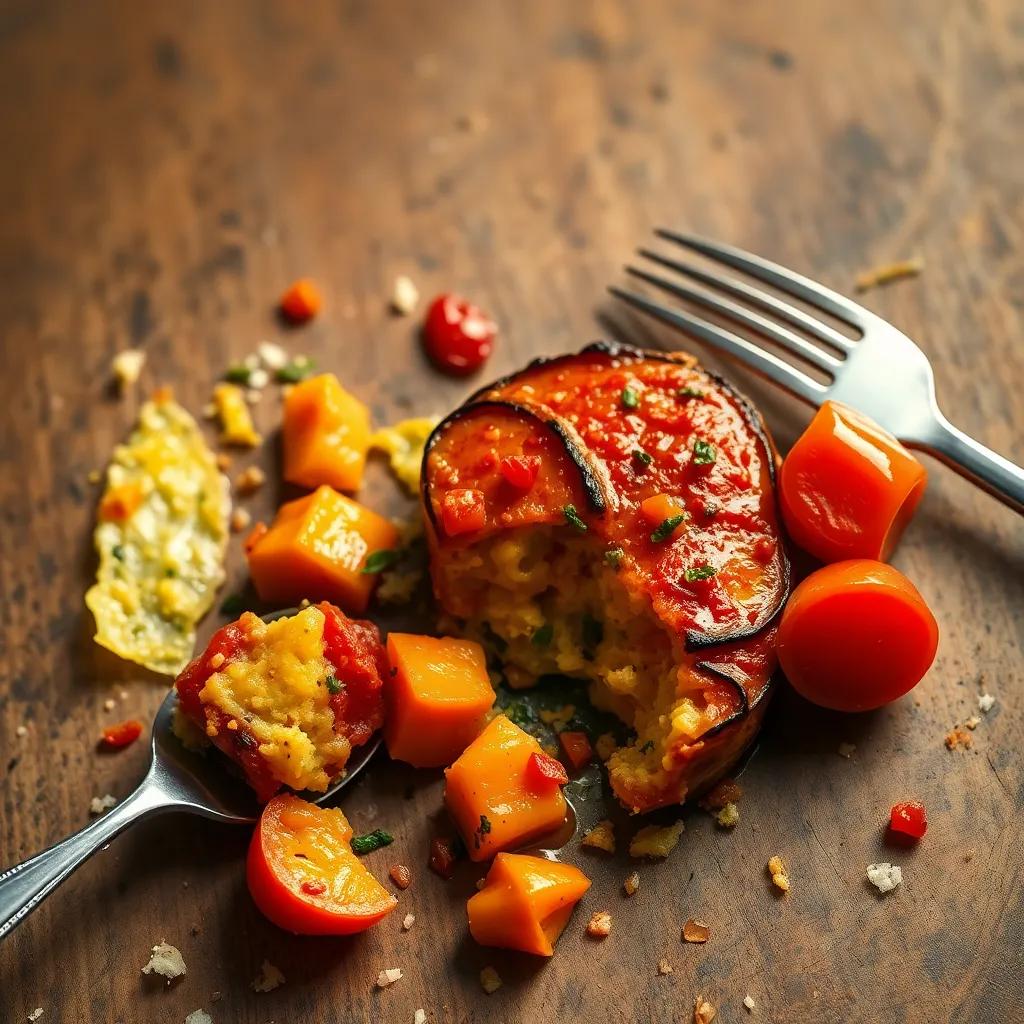
Intro
Ratatouille is a timeless dish that effortlessly brings together vibrant vegetables and fragrant herbs into a comforting, wholesome meal. What makes this particular vegan version so special is how it balances layers of flavor with ease—requiring minimal hands-on time but rewarding you with a rich, satisfying dish that’s as nourishing as it is beautiful. Whether you’re looking to impress guests with a colorful centerpiece, enjoy a cozy weeknight dinner, or simply embrace plant-based cooking with something approachable, this recipe fits the bill perfectly.
Its versatility shines through in how well it pairs with a variety of accompaniments, making it ideal for everything from casual lunches to festive gatherings. Plus, the long simmer allows the flavors to deepen and mingle, creating a depth often reserved for slow-cooked meals, all without complicated techniques or hard-to-find ingredients. This ratatouille offers an inviting way to celebrate seasonal produce, encouraging a gentle, mindful approach to healthy eating without sacrificing flavor or satisfaction.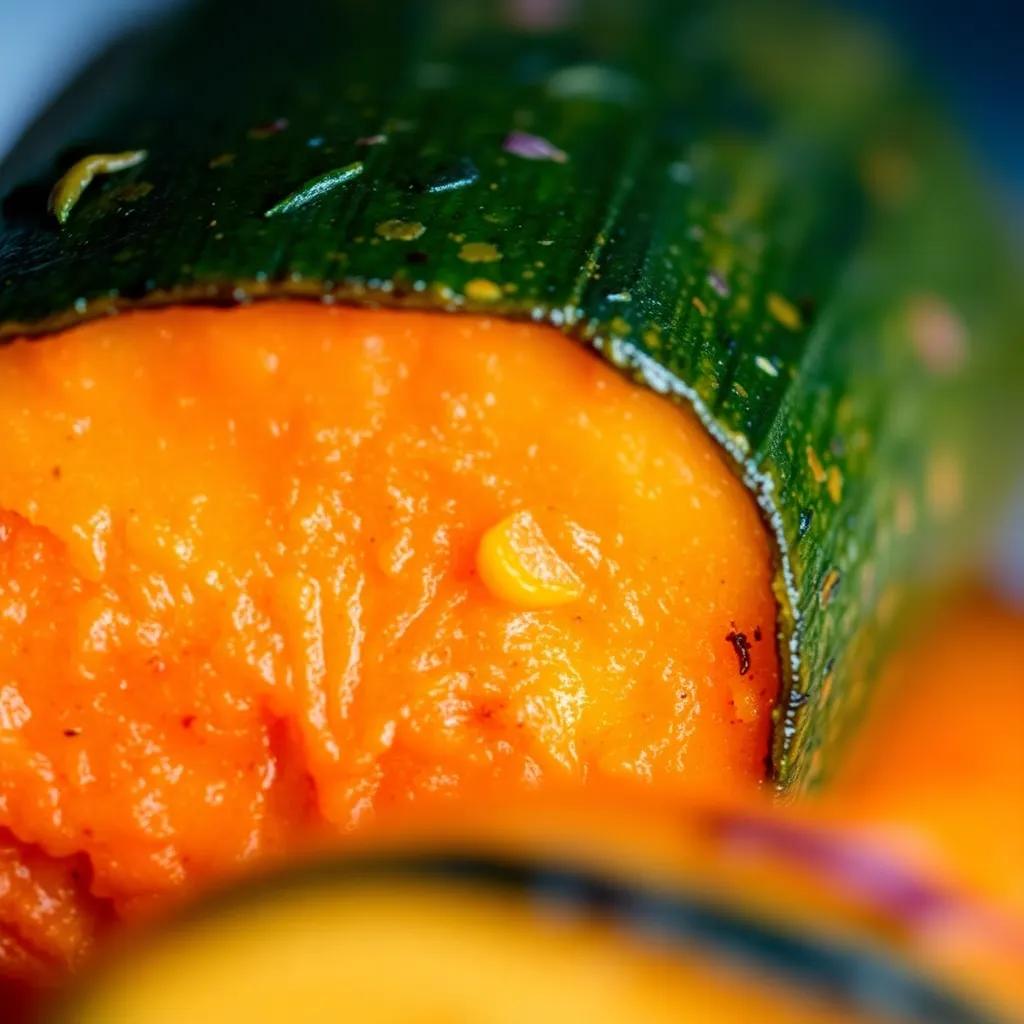
Ingredient Notes
One of the stars of this vegan ratatouille is the eggplant, which provides a tender, slightly creamy texture that beautifully absorbs the blend of herbs and tomato richness. When selecting eggplant, look for one that feels firm and heavy for its size with smooth, unblemished skin. A fresh eggplant ensures less bitterness and better texture. If you’re unable to find traditional eggplants, Japanese or Chinese varieties can be excellent alternatives; just adjust cooking time slightly as they tend to cook faster.
The interplay of tomatoes and tomato paste is another cornerstone of the dish’s vibrant flavor. Using ripe, juicy tomatoes is key—they bring natural sweetness and acidity that balance the savory elements. In the off-season, canned whole or diced tomatoes can work well, but fresh is best when available. Tomato paste, though used sparingly here, intensifies that umami punch and adds a subtle depth without overpowering the other vegetables.
High-quality olive oil is essential not just for cooking but as a finishing touch. A good extra virgin olive oil will lend a fruity, peppery nuance that elevates the dish’s Mediterranean character. When shopping, pick an olive oil labeled “extra virgin” and stored in a dark bottle to preserve freshness. If olive oil isn’t your preference, avocado oil or a light vegetable oil can substitute without radically changing the flavor profile, though the final richness may be slightly different.
Finally, the dried herbs—thyme and oregano—carry the signature Provençal aroma that ties the medley together. While fresh herbs can be used if you have them on hand, dried versions offer a concentrated essence that unfolds during the slow simmer. When buying dried herbs, choose small containers with a recent packaging date to ensure potency. As a flexible tip, herbes de Provence is a lovely blend that can replace the thyme and oregano if you seek a ready-made seasoning with lavender or rosemary notes included.
These ingredients, thoughtfully chosen and prepared, transform simple vegetables into a harmonious, aromatic ratatouille that speaks to the joys of plant-based cooking without fuss or fancy substitutions.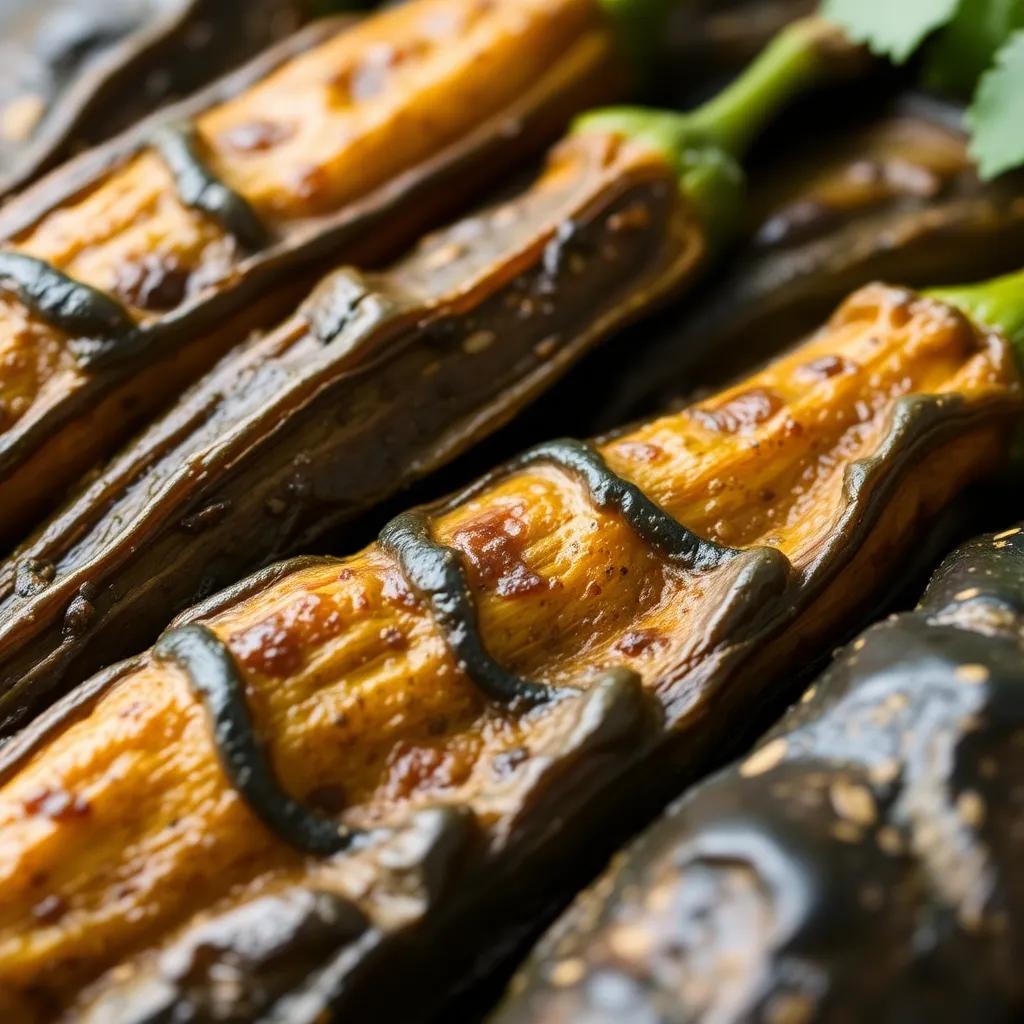
Tips & Variations
Elevate your vegan ratatouille experience with these handy tips and creative twists that personalize the dish while keeping it accessible and vibrant.
- Mastering Texture: Avoid sogginess by salting and draining the eggplant before cooking—this simple step reduces bitterness and excess moisture, giving you that perfect tender-but-not-mushy bite. For an extra layer of texture, consider roasting the vegetables separately at high heat before combining them in the skillet; this caramelizes their natural sugars and adds smoky depth.
- Flavor Boosters: While the classic herbs are the backbone of ratatouille, don’t shy away from experimenting with fresh herbs like rosemary or marjoram, especially if you grow them at home. A splash of balsamic vinegar or a sprinkle of smoked paprika near the end of cooking can also add complexity and a subtle tangy warmth.
- Customize Your Veggie Lineup: Although the traditional mix of eggplant, zucchini, bell peppers, and tomatoes is timeless, you can incorporate other seasonal vegetables such as mushrooms for earthiness, carrots for sweetness, or even kale for a nutrient punch. Keep in mind that denser veggies may require slight adjustments in cooking time.
- Make It Gluten-Free & Oil-Free: This ratatouille is naturally gluten-free, but if you want to make it oil-free or lower in fat, try water-sautéing the veggies or use vegetable broth to prevent sticking. A bit of lemon juice added at the end brightens the flavors, compensating for less richness.
- Protein Add-Ins: To turn this hearty vegetable stew into a well-rounded meal, stir in cooked lentils or chickpeas during the simmering stage. This adds texture and plant-based protein without overpowering the delicate vegetable medley.
- Serving Variations: For a completely different vibe, blend a portion of the finished ratatouille into a creamy spread perfect for crostini or sandwiches. Alternatively, layer slices of zucchini, eggplant, and tomato in a baking dish, pour over the ratatouille sauce, and bake briefly for a deconstructed gratin style.
- Spice It Up: For those who enjoy a bit of heat, toss in red pepper flakes or a diced fresh chili when sautéing the garlic. This adds a pleasant zing that contrasts with the natural sweetness of the vegetables.
By embracing these tips and variations, you can tailor this vegan ratatouille to suit your palate, dietary preferences, and seasonal produce availability—making each batch uniquely yours while keeping its signature warmth and wholesomeness intact.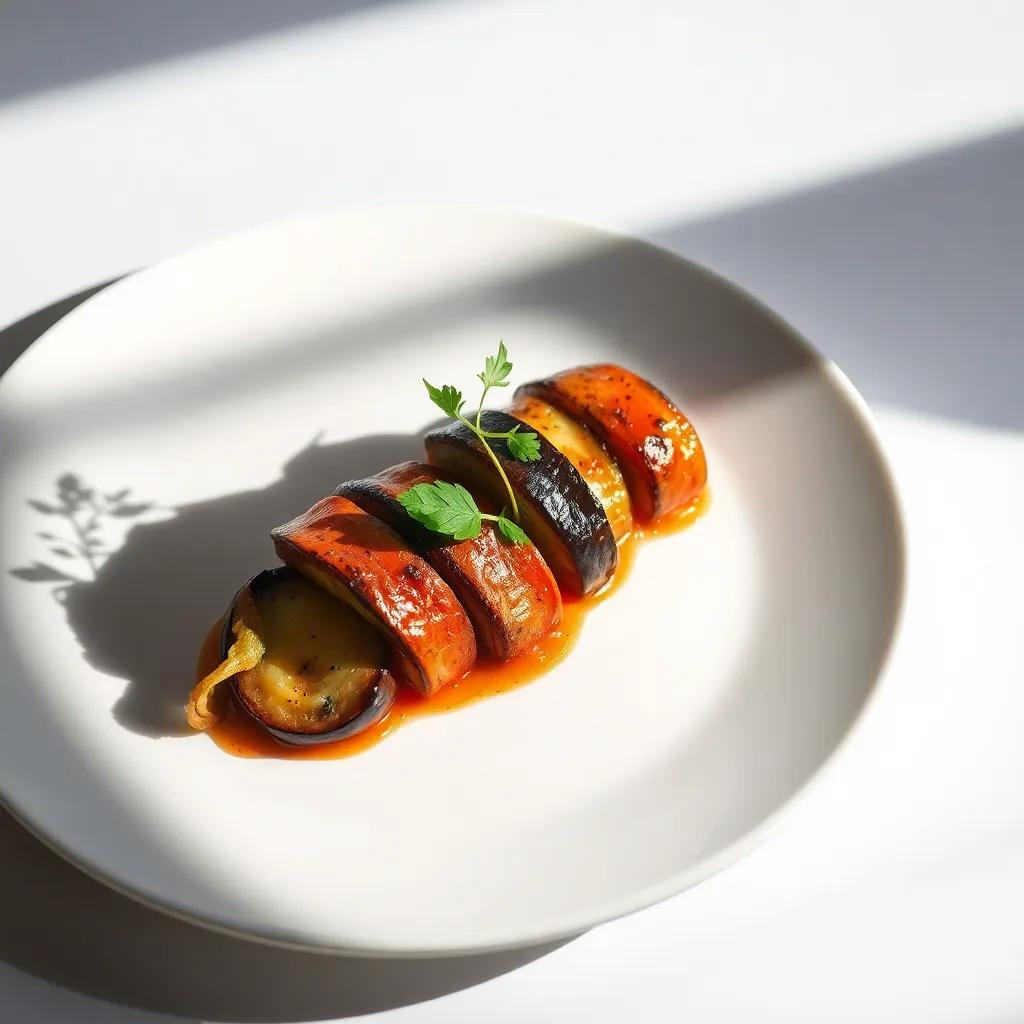
Leftovers & Storage
Leftovers of this vibrant vegan ratatouille are not only easy to store but truly shine when enjoyed the next day, as the flavors develop even further with time. To keep your leftovers fresh and delicious, transfer the cooled dish into airtight containers—glass or BPA-free plastic ones work best to preserve the texture and prevent any absorption of fridge odors.
Stored properly in the refrigerator, ratatouille will stay fresh for up to 4 days. Before refrigerating, make sure to let it cool to room temperature, but don’t leave it out longer than two hours to stay safe from bacterial growth. When reheating, gently warm it on the stove over low heat or use a microwave-safe container to avoid drying out the vegetables. Adding a splash of water or vegetable broth during reheating can help restore moisture and bring back that luscious, stew-like consistency.
If you want to keep your ratatouille for longer periods, it freezes beautifully. Portion it out into freezer-safe containers or heavy-duty zip-top bags, squeezing out as much air as possible. Label with the date, and you can expect the best quality for up to 3 months. Thaw overnight in the refrigerator and reheat thoroughly before enjoying.
Thanks to its balanced moisture and hearty vegetable base, this ratatouille also makes a perfect candidate for meal prepping. You can double the batch and portion it into individual servings for quick lunches or dinners throughout the week. Pack leftovers in sturdy containers along with your choice of grains or bread for a wholesome, ready-to-go meal. Additionally, its room-temperature serving option makes it ideal for picnic spreads or packed lunches without worrying about refrigeration for short periods.
With mindful storage and a few simple steps, your leftover vegan ratatouille will provide nourishing, flavorful meals well beyond the initial serving—proving that sometimes, the magic of this dish grows even richer over time.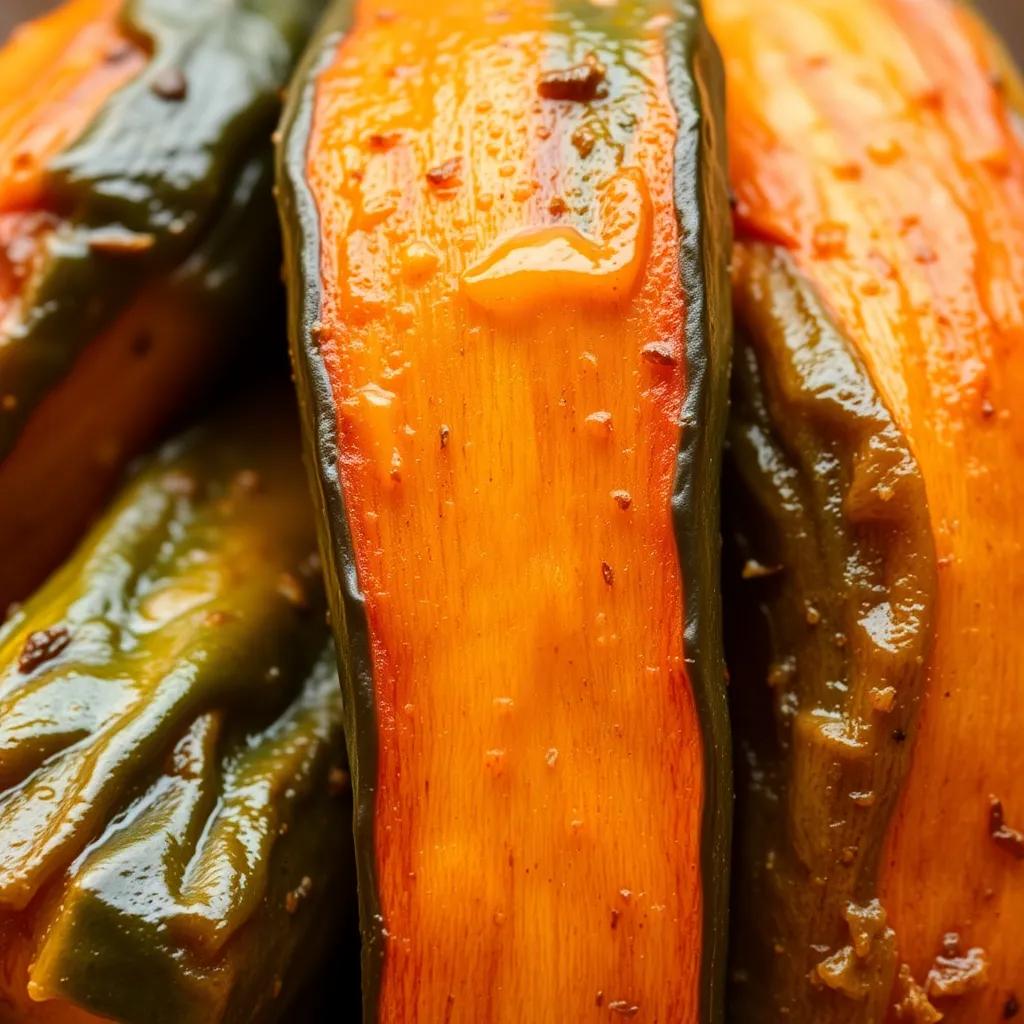
Behind the Recipe
Ratatouille is more than just a collection of stewed vegetables—it’s a dish steeped in the heart of Provençal French culture, where humble ingredients come together to create something greater than the sum of their parts. Originating from the sun-drenched countryside of Provence, ratatouille was traditionally a way for farmers to use the bounty of their garden, celebrating the peak of summer’s harvest with an economical yet flavorful meal. The beauty of ratatouille lies in its simplicity and its ability to showcase fresh, seasonal produce in a way that honors the individual character of each vegetable.
This vegan version honors that legacy while embracing modern plant-based cooking. Its roots trace back to a rustic farmhouse stew, but it has traveled far beyond, becoming a beloved dish in kitchens worldwide—admired for its vibrant colors, layers of flavor, and nourishing qualities. Preparing ratatouille is often a meditative process; chopping the vegetables and slow-simmering them invites a rhythm that connects the cook to the land and seasons. Many families, including my own, have fond memories of gathering around a warm pot of ratatouille on quiet evenings, sharing stories as the fragrant herbs filled the air.
What makes this recipe particularly meaningful is how approachable it is, inviting cooks of all levels to engage with a historic dish without intimidation. By stripping it down to essential, wholesome ingredients and straightforward techniques, it becomes a vehicle not only for good eating but also for reconnecting with culinary tradition in a gentle, sustainable way. Each spoonful is a reminder of simple pleasures—seasonal rhythms, communal meals, and the timeless dance between nature’s gifts and the craft of the kitchen.
FAQ
Can I use other vegetables if I don’t have all the traditional ones?
How do I store leftovers, and how long will they keep?
Can I make this recipe oil-free or lower in fat?
Is this recipe suitable for gluten-free diets?
Can I prepare ratatouille in advance for meal prep?
How can I add more protein to make it a fuller meal?
What herbs or spices work best to customize the flavor?
Wrapping It Up
With its vibrant medley of fresh vegetables and comforting herbs, this easy vegan ratatouille recipe is a delightful way to nourish both body and soul. Whether you’re a seasoned plant-based cook or just starting to explore, its rich flavors and simple steps make it a kitchen favorite you’ll return to time and again.
Give it a try and see how this classic French dish can brighten your mealtime! Don’t forget to share your thoughts, rate the recipe, or tell us about your own creative spins — we’d love to hear how you make this flavorful feast your own.

